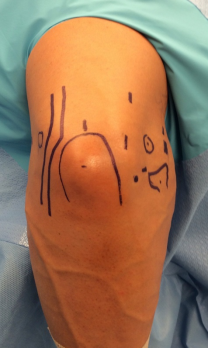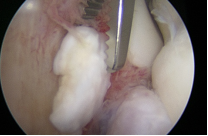Elbow Arthroscopy

Arthroscopy is a minimally invasive way to perform elbow surgery. To perform an arthroscopy Dr. Chalmers will make a small incision 5 millimeters (1/4th inch) and insert a small fiberoptic camera into the elbow joint. Once the joint is filled with saline fluid, the entire elbow joint can be visualized using the camera. Secondary incisions can be made to insert long-thin instruments made specifically for arthroscopy. If you have a elbow arthroscopy, initially after surgery the elbow will be very swollen with fluid used to visualize the joint during the surgery. This fluid dissipates rapidly, but the elbow may remain swollen because of the procedure performed.
Many procedures that used to require an open incision can now be performed through an arthroscopy. Examples include removal of loose bodies, removal of inflammation, removal of bone spurs, scar tissue and adhesion release, freeing up a stiff elbow, and treatment of tendonitis. Because the procedure involves small incisions and minimal damage to the muscles, many surgeons believe patients that undergo arthroscopy may have less pain, less stiffness, fewer infections, and an overall decreased rate of complications. Most elbow arthroscopies are performed on an outpatient basis, which means patients can have their procedure at a surgery center instead of the hospital and can go home the day of surgery instead of staying the night in the hospital.


Not all procedures in the elbow can or should be performed through an arthroscopy. For instance, elbow fractures, elbow replacements, elbow ligament reconstruction, and revision of prior surgery often requires a traditional incision. If you are planning to have surgery, make sure you know whether your surgery is planned as an arthroscopy or an open surgery.
Click here to download the PDF.
You will need the Adobe Reader to view and print these documents 
